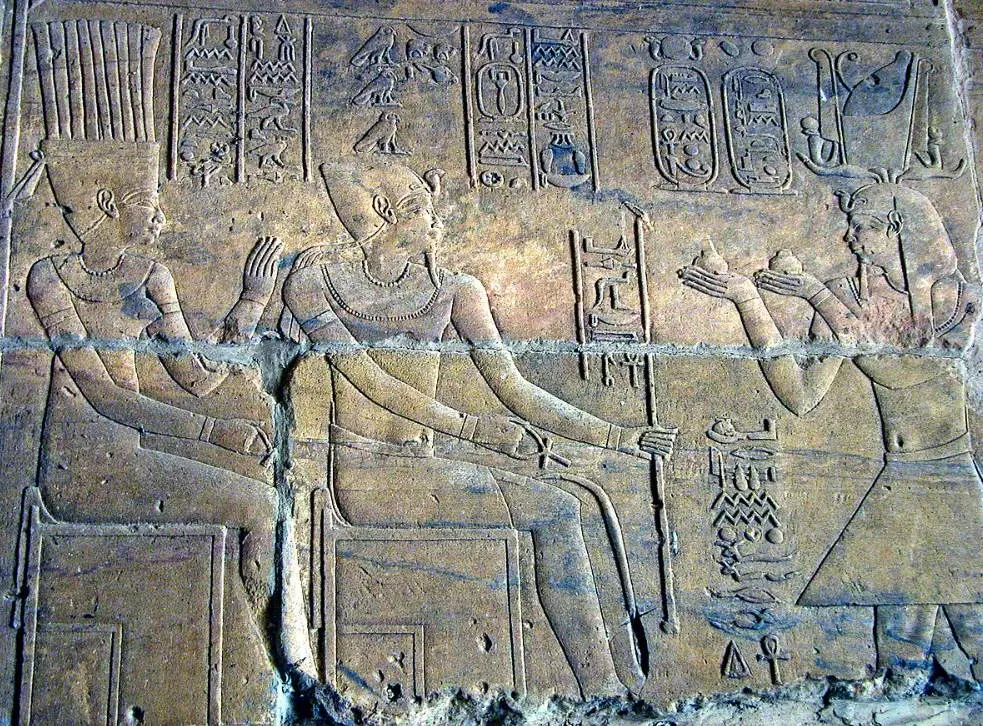One of the many famous temples in Egypt once stood majestically along the banks of the Nile River.
A lot has changed since then because it not only had to be restored but it was moved to another location as well in the 1960s.
In this article, you’ll discover some of the most interesting facts about the Temple of Dakka, a building in Egypt with some remarkable stories to tell.
1. It’s located in the utmost southern part of Egypt
The Temple of Dakka is named after Ad-Dakka, a place situated in Lower Nubia. This region is situated in the utmost southern part of Egypt, not that far from the border with Sudan.
This complex is situated just about between Aswan, a major city in Upper Egypt, and the magnificent rock-carved temple complex of Abu Simbel.
This is quite some distance from the other important city in the region, Luxor, the place where most cruise boats on the Nile depart. There you can find Luxor Temple and the Karnak Temple complex, two of the most famous temples in Egypt.
Another temple that dates back to the Roman era in Egypt and that is named the “Temple of Maharraqa” is located just nearby.

2. The building was dedicated to the ancient Egyptian god of wisdom
Like every other temple that was ever constructed in ancient Egypt, it was dedicated to one of the gods named Thoth. He was the Ancient Egyptian god of wisdom.
This was just one of his functions because he was also the god of the moon, writing, hieroglyphs, science, magic, art, and judgment, quite a versatile fellow.

He was commonly depicted with the head of an Ibis or a baboon. Because of his function, he is often depicted as writing down the results of the scale of Maat. When the heart and a feather are balanced, access to the afterlife is granted.
An unbalanced heart results in the dead being devoured by Ammit, the crocodile who is eagerly waiting for Thoth’s response.

3. The temple was started as a humble structure in the 3rd century B.C.
The temple was started by a Kushite King named Arqamani. He ruled in the ancient city of Meroë which is situated within the borders of modern-day Sudan.
Little is known about his actual rule but he is mentioned in several reliefs in various temples in the region. He was buried in one of the Pyramids of Meroë, one of the most stunning archaeological sites in Sudan.
The construction was initiated in the 3rd century B.C. and was nothing more than a humble shrine to commemorate the gods.
He got help from the Ptolemaic ruler of Egypt at the time, Ptolemy IV Philopator (244-204 B.C.), who completed the initial phase by adding a gate to the complex.

4. The temple was substantially enlarged during the 2nd century B.C.
Adding new elements to an existing structure was pretty common in Ancient Egypt and that’s why so many temples became so huge.
The same happened to the Temple of Dakka when Ptolemy IX Soter came to power in the 2nd century B.C., he added a huge portico to the temple.
He also expanded the temple in length by adding a row of columns that lead up to the main sanctuary at the end of the structure.

5. It was transformed into a fortress along the Nile in the 1st century A.D.
The Ptolemies ruled over Egypt between 305 and 30 B.C. The end of their reign coincided with the establishment of the Roman Empire by Augustus, the first Roman Emperor.
It remains fascinating that the Romans didn’t convert the temples in Egypt to suit their own needs, but rather expanded them as well.
Augustus initiated the construction of a second sanctuary at the back of the temple, and the second Roman emperor Tiberius completed the curtain wall that surrounded the complex.
Upon completion, the temple could easily be described as a temple fortress on the banks of the Nile River. Both the front of the temple and the side of the river featured an entrance.

6. How big is the Temple of Dakka?
The entire complex was surrounded by a large stone wall that had dimensions of 270 x 444 meters (885 x 1,456 feet).
The most prominent features of the entire temple complex are the two towers at the entrance of the structure. These reach a height of 12 meters (39 feet) above the ground below.
By the time the wall surrounding the temple was completed, the distance between the entrance and the sanctuary near the Nile River was 55 meters (180 feet).

7. The interior features multiple reliefs dedicated to the gods
The pylons of the temple have been remarkably well-preserved and the same can be said about the reliefs inside this fascinating structure.
Some reliefs that date back to the first construction phase are virtually intact, which is quite remarkable.
One of these depicts the man who commissioned the temple, Kushite King Arqamani, as he is making an offering to the gods.

8. It was relocated during a massive UNESCO project in the 1960S
The construction of the Aswan Dam in the 1960s was a serious threat to many ancient Egyptian structures in the area. The dam is, however, of vital importance to all of Egypt.
There was no other choice than to dismantle a large number of temples and monuments and relocate them to elevated locations.
Otherwise, they would have been completely submerged by Lake Nasser, the reservoir that was created because of the construction of the dam.
The incredible project conducted by UNESCO was completed in the 1960s and that’s why we can still admire the Temple of Dakka today.

